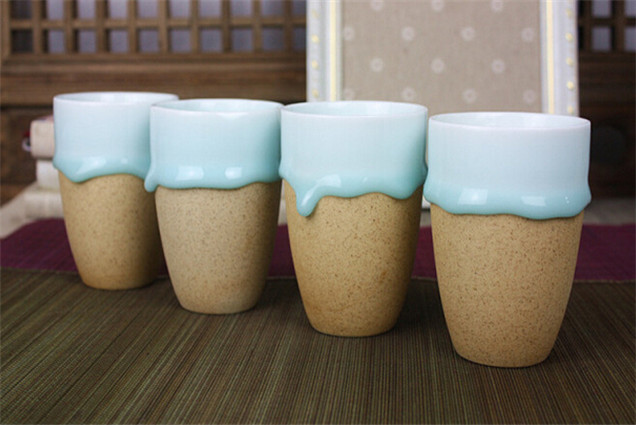Drip glazing and bare outsides: Deceptively difficult.
What issues to these carry? insight-live.com/glossary/46">Glaze fit. Do these yourself and they might end up being glaze compression demonstration pieces. These are available on Aliexpress (as Drip Pottery, Drippy Pottery or Goopy Glazes) and they are made by a manufacturer that has close control of body maturity (and thus strength) and the capability to tune the thermal expansion fit of glaze-on-body. Glaze fit has to be better than normal because of the absence of an outside glaze on much of the surface. Too low an expansion and the compression (outward pressure) will fracture body (especially for thin-walled pieces). Too high and it will craze. And if the glaze is thick, it will shiver or craze with far less forgiveness than a thin layer. And how did they get the glaze on this thick? They likely deflocculate it, up to 1.7 or more, glaze the inside, let it dry, then glaze the outside. And apply the glaze to preheated ware. If done right, these pieces are a visual and technical achievement. However, drippy glazes in the hands of hobbyists carry more risk. They often just multiple layers of commercial brushing glaze that only by accident fits the body being used. No wonder their pieces often end up as time-bombs or crazed bacteria farms.
Pages that reference this post in the Digitalfire Reference Library:
Glaze at 1.7 specific gravity on green-ware. Way too thick!, Why are these vessels cracking when hot water is poured in?, This crack is "spring loaded" out of the kiln. Why?, Is inside-only glazing a good idea? We say it is not., Deflocculation, Glaze fit, Glaze Compression, Glaze thickness

This post is one of thousands found in the Digitalfire Reference Database. Most are part of a timeline maintained by Tony Hansen. You can search that timeline on the home page of digitalfire.com.
